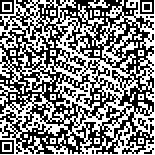| 本文已被:浏览 2676次 下载 2018次 |

码上扫一扫! |
|
|
| 基于叶绿素a时空分布的胶州湾菲律宾蛤仔养殖容量评估 |
|
董世鹏1,2, 蔺凡1, 姜娓娓1, 杜美荣1, 高亚平1, 李凤雪1, 侯兴1,2, 蒋增杰1,3
|
|
1.中国水产科学研究院黄海水产研究所 农业农村部海洋渔业可持续发展重点实验室 青岛 266071;2.上海海洋大学水产与生命学院 上海 201306;3.青岛海洋科学与技术试点国家实验室海洋渔业科学与食物产出过程功能实验室 青岛 266071
|
|
| 摘要: |
| 2017年7月~2019年4月期间,本研究采用大面观测、现场模拟实验与生长情况跟踪相结合的手段,基于Dame指标和Herman模型估算了胶州湾菲律宾蛤仔(Ruditapes philippinarum)的养殖容量。结果显示,调查期间,胶州湾水体的叶绿素a浓度为2.09~4.28 mg/m3,均值为3.07 mg/m3;不同规格(壳长2.29~3.59 cm)的菲律宾蛤仔单位个体的平均滤水率为0.45 L/(h∙ind.),单位重量菲律宾蛤仔的平均滤水率为2.52 L/(g∙h);菲律宾蛤仔1龄、2龄和3龄的平均干重分别为0.18、0.30和0.42 g;胶州湾的水团停留时间为52 d,初级生产时间为1.58 d,贝类滤水时间为2.09 d;1龄、2龄和3龄蛤仔的养殖容量分别为637、378和272 ind./m2。目前,菲律宾蛤仔养殖量已超过养殖容量,建议若以2龄蛤为采捕对象,适宜的播苗密度为582 ind./m2;若以3龄蛤为采捕对象,适宜的播苗密度为789 ind./m2。本研究结果可为保障胶州湾菲律宾蛤仔养殖产业的绿色高质量发展提供理论依据和数据支撑。 |
| 关键词: 菲律宾蛤仔 Dame指标 Herman模型 养殖容量 胶州湾 |
| DOI:10.19663/j.issn2095-9869.20190820002 |
| 分类号: |
| 基金项目: |
|
| Estimation of Carrying Capacity of Manila Clam (Ruditapes philippinarum) in Jiaozhou Bay Based on Spatial and Temporal Distribution of Chlorophyll a |
|
DONG Shipeng1,2, LIN Fan1, JIANG Weiwei1, DU Meirong1, GAO Yaping1, LI Fengxue1, HOU Xing1,2, JIANG Zengjie1,3
|
|
1.Yellow Sea Fisheries Research Institute, Chinese Academy of Fishery Sciences, Key Laboratory of Sustainable Development of Marine Fisheries, Ministry of Agriculture and Rural Affairs, Qingdao 266071;2.College of Fisheries and Life Sciences, Shanghai Ocean University, Shanghai 201306;3.Laboratory for Marine Fisheries Science and Food Production Processes, Pilot National Laboratory for Marine Science and Technology (Qingdao), Qingdao 266071
|
| Abstract: |
| Based on Dame indices and Herman model, the carrying capacity of Manila clam (Ruditapes philippinarum) in Jiaozhou Bay is estimated with the comprehensive fishery survey data, field simulation experiment, and growth tracking data between July 2017 and April 2019. The results showed that the average chlorophyll a concentration was in the range of 2.09~4.28 mg/m3, with an average value of 3.07 mg/m3. The average clearance rate was 0.45 L/(h∙ind.) and converted to a unit-mass based value was 2.52 L/(g∙h). The average dry weight of Manila clams at 1, 2, and 3 ages were 0.18, 0.30, and 0.42 g, respectively. The water mass residence time was 52 days, the primary production time was 1.58 days, and the bivalve clearance time was 2.09 days in Jiaozhou Bay. The corresponding carrying capacity of Manila clam were estimated to be 637, 378, and 272 ind./m2 for 1-year, 2-year and 3-year old clams, respectively. Currently, the cultured quantity of Manila clams has exceeded the carrying capacity. It is recommended that the stocking density to be 582 ind./m2 if 2-year clams are considered as the target object, and the stocking density to be 789 ind./m2 if 3-year clams are considered as the target object. The results provide theoretical basis and necessary data for the development of the clam aquaculture in Jiaozhou Bay. |
| Key words: Ruditapes philippinarum Dame indices Herman model Carrying capacity Jiaozhou Bay |